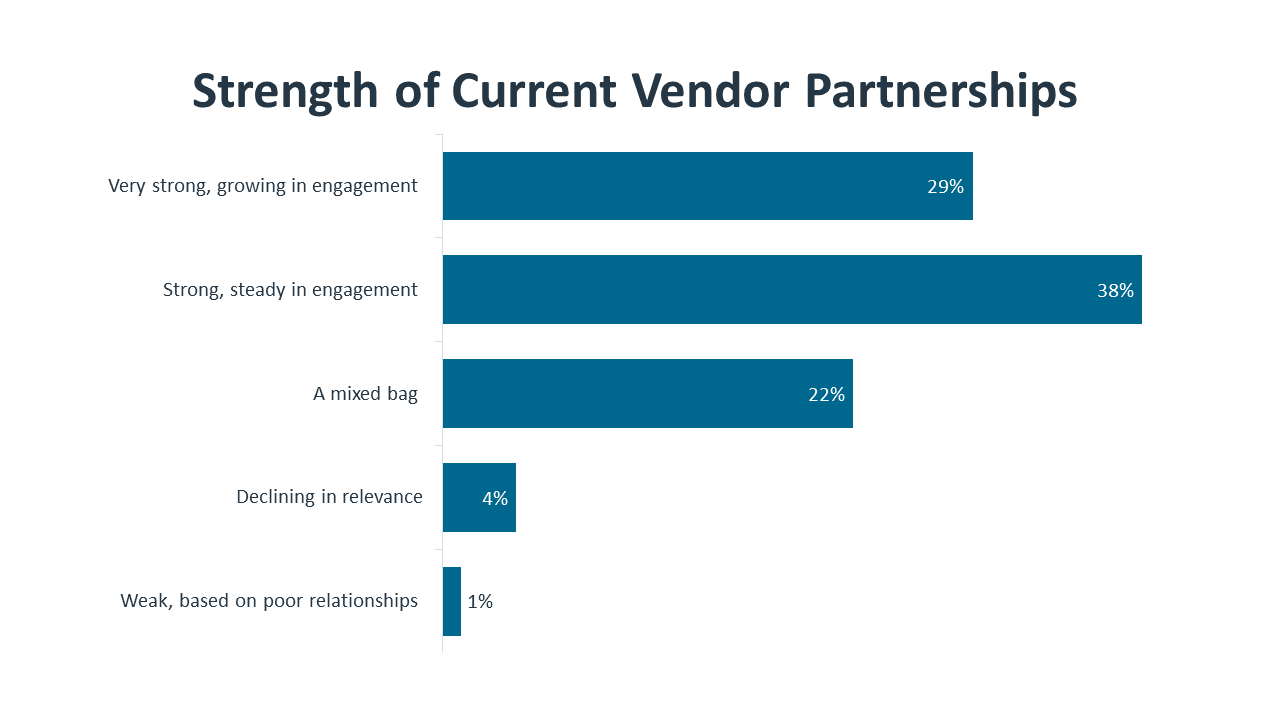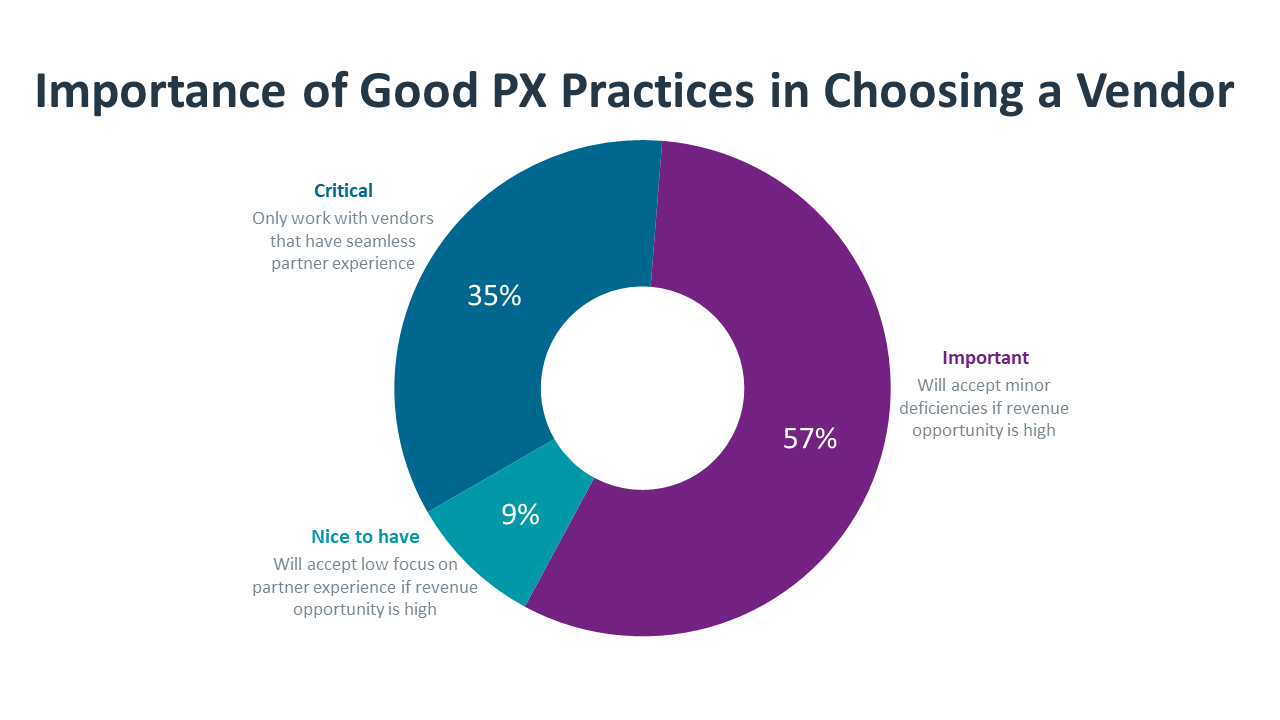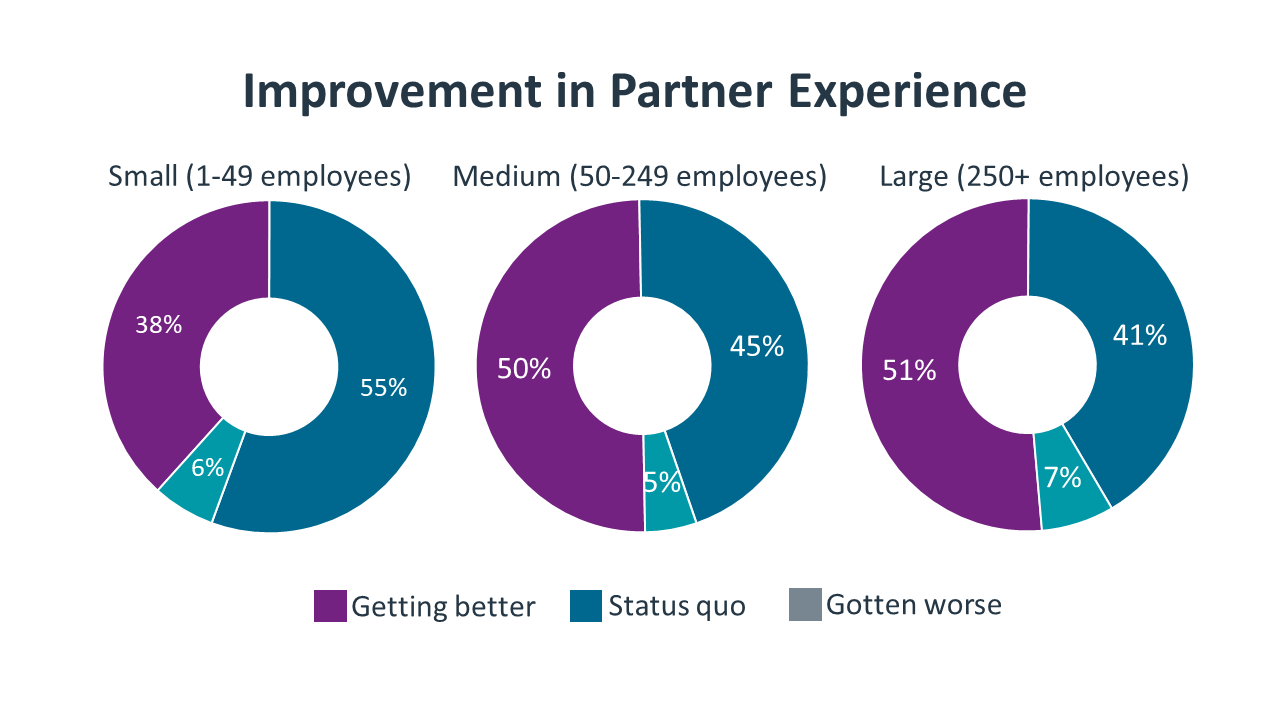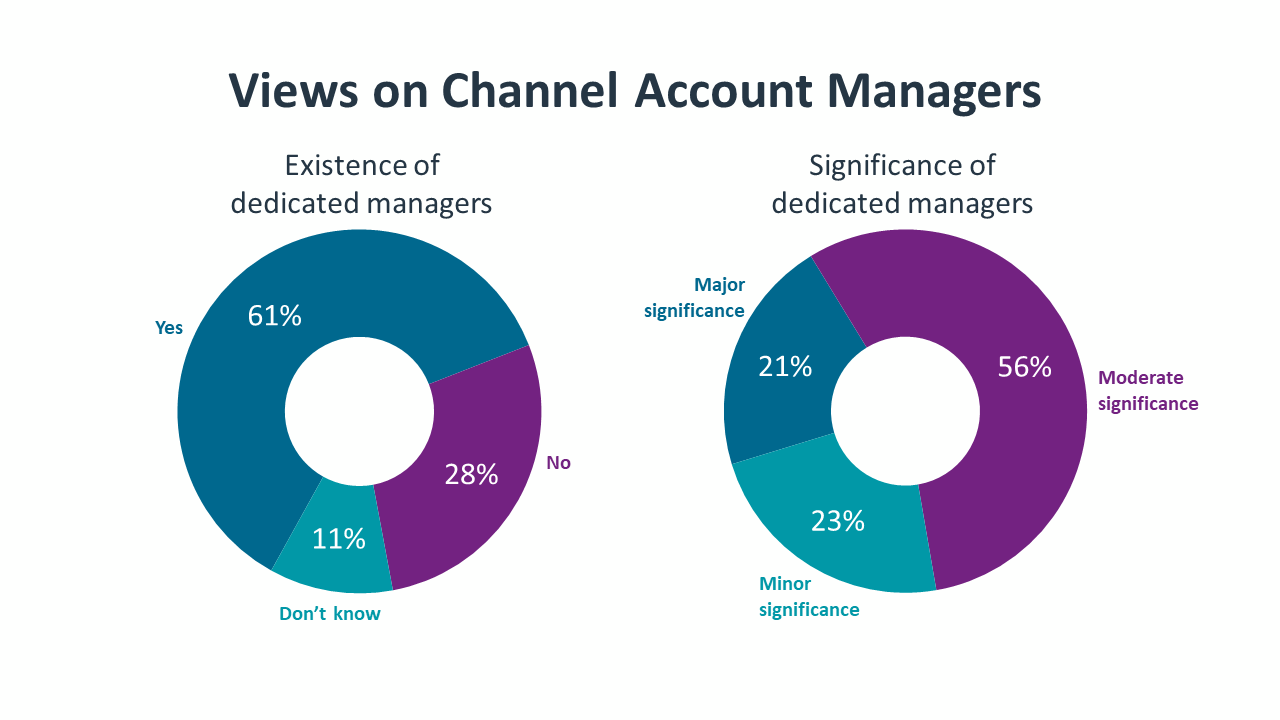As business axioms go, few are truer than the one about relationships being everything. In theory, your best business alliances are synergistic. They add to your skill set, expand your sales footprint, foster innovation, and grow revenue. Everybody wins.
In a perfect world, that is.
Not-so-great partnerships offer another story. Some are merely ineffective. Others are more damaging, resulting in a mountain of regret, financial disputes, investment losses and/or legal wrangling.
Yet, for better or worse, partnering is not optional for the IT channel. It’s the essential meaning behind the business model. Solution providers, MSPs and other tech influencers operate – often along with distributors – as the fulcrum between technology vendors on the supply side of the equation and end customers on the demand end. To say the go-to-market flow of technology goods and services is a chain of interdependency is an understatement.

So why not make the experience of partnering a good one? That’s the key question explored in CompTIA’s latest research study, Partner Experience Trends 2022. The study data, sampled from 400 US-based IT businesses, reflects attitudes about vendor-partner relationships today and provides insights into the weight channel firms place on superior partner experience. In the main, channel firms report satisfaction with vendor relationships. That satisfaction is likely twofold: First, partners today enjoy far greater choice of vendors to align with in a marketplace that has mushroomed as part of the cloud era. Greater choice means greater chance to find the most optimal fit. Knowing this, vendors have had to step up their game in terms of recruitment, enablement, tech support, benefits, and other intangibles partners value. In other words, it’s all about optimizing the experience for partners that have options to go elsewhere.
Partner Experience – What Is It?
So, what is partner experience, or PX for short? There’s no one-size-fits-all definition for what optimal PX means for one company or another, though there are commonalities. Ease of doing business. Fast, flexible technical support options. Investment in joint revenue success. To name just a few. For the purposes of consistency across this quantitative study, CompTIA defined PX as the following for respondents:
Partner experience reflects the totality of your engagement with a technology vendor, from recruitment and/or search to onboarding to support and ongoing communications/ease of doing business.
For vendors, delivering on partner experience matters because today’s channel firms, as mentioned, have myriad choices of whom to conduct business with and whose products and services to sell and manage. Technology vendors who strip hassle and pain out of the entire partnering process – including all the steps involved in recruitment, onboarding, support and management, compensation, and other pieces of the relationship lifecycle – are burnishing their channel reputation along with their prospects.
Consider that 35% of channel firms said that they will only work with vendors that offer a seamless partner experience, while the majority (57%) hews close to that high mandate, deeming solid PX important enough that they will accept only slight deficiencies in it even from a vendor partner they are generating revenue from. Just 9% believe PX is a nice-to-have, not need-to-have perk when choosing vendor partners.

As it has been for decades, the ease of doing business is among the biggest factors in the why-should-we-work-with-this-vendor-over-another department. It ranks higher than even the profit-making opportunity in many cases. Ease of doing business is everything you think it would be, from swift technical support responses to transparent pricing and compensation information to effective communications in general.
Trust is also a key factor in whether the vendor-partner relationship and overall experience is successful. Trust takes many forms, including such things as reducing or eliminating channel conflict between a vendor’s direct sales team and its indirect partners or ensuring that deal registration plays by the rules that are established. One major trust driver for channel firms is the belief – and tangible proof – that a vendor is invested in the success of the partner’s business as much as their own.
Beyond trust, however, partners are constantly evaluating vendor relationships both up and down. In the last year, 40% of them expanded the number of vendor programs they joined, 16% decreased their participation, and 31% maintained the status quo. Increased reliance on services dollars for revenue and profit, the desire to align with vendors of newer technologies, and the general shift to the cloud and a subscription, as-a-service business model has jolted many partners out of the complacency of working with the same mix of vendors without diligent evaluation and assessment. And one driving factor in whether to continue with a current vendor or choose a new one is how well those companies provide solid PX.

PX Priorities, Vendor Alignment
Why do partners tinker with their vendor mix? For many, it is to better synch the objectives of the vendors they work with to their own current and future business goals. For example, the No.1 reason (35% cited) a channel firm added a new vendor or rearranged its program portfolio in the last year was to accommodate its own shift to newer or emerging technologies such as AI, IoT, drones etc. Yes, there will be growing pains as these newly selected vendors figure out the best way to build a partner program and cultivate effective channel relationships. But it’s becoming clearer that the time when the preponderance of channel firms works exclusively with a small handful of giant platform vendors is fading. Today, an exploding ecosystem of differing channel and vendor types – not to mention online marketplace behemoths – is going to greatly impact how individual companies work together and define good vs. bad partner experience.
50% of channel firms have dropped a vendor due to poor PX practices in the last two years
Beyond an entry path to new markets, another reason channel firms searched out new vendors hinges on the continued impact of the industry shift to cloud computing, which 33% of respondents cited. Cloud’s rewriting of the computing paradigm has led many channel firms quickly down the path toward more services work, recurring revenue models, and non-transactional consulting and away from straight product sales. Those moves have triggered numerous others, including the adoption of new ways of marketing. For example, a third of channel firms said they’ve re-evaluated their vendor mix because their new business model is best served by emphasizing their own services-oriented brand first when they go to market. Presumably, this means instead of leading with vendor/product brands when they interact with potential customers.

All that said, the lion’s share of channel firms in the study report general satisfaction and stability with many of the vendors they work with. Nearly 3 in 10 said they are very satisfied with PX in the last two years, while 52% said they have been satisfied. Not insignificant, however, are the 18% that report a mixed bag of sentiment, which likely means that their vendors excelled in some areas, not so much in others. But on the whole, it’s notable that channel firms are more acutely aware of all the facets of partner experience that are important to them. And as shown above, once you move beyond the umbrella concepts of “ease of doing business,” the list of PX elements is highly specific and fundamental. It’s not for nothing that technical support response times remains the top priority for many.

Adapting to New Realities
As stated, PX encompasses all the steps, interactions, resources, and requirements in the lifecycle of the partner-vendor relationship. Partners have been vocal about PX, especially amidst changing business models and the increased complexity of the tech landscape. In response to this, and to become more attractive to potential new recruits, partners say that vendors have been making changes or investing new resources in recruitment, engagement and retention tactics.
Case in point, nearly 4 in 10 channel firms said vendors are reworking compensation models and benefits to reflect the times and, notably, to attract and recruit new partners. One of the biggest challenges in the last 15 years of cloud computing dominance has been how to reward different types of partners financially for as-a-service or subscription-type models commensurate with transactional product sales. In other words, how will partners make money when, in most cases, the game is no longer about reselling at markup an office’s worth of devices and networking gear? There’s no easy answer, especially for vendors that are looking to attract newer channel players born into this cloud-driven services paradigm. As margins on products have slimmed, partners have doubled down on their own services business as a profit center while vendors attempt the difficult compensation calculus to cover a raft of partner business types.
And yet, the fact remains that partners still derive a significant amount of overall revenue via vendor compensation, whatever the flavor. Again, that goes back to the entwined nature of the indirect channel, manufacturers and the entire tech ecosystem. Four in 10 respondents report that most of their revenue flowed in as vendor-based compensation – margin points, discounts, etc.– compared with 35% of partners that said they generated the bulk of sales via internal efforts. Twenty-two percent called it a mix between the two sources. That revenue sourcing ratio broke mostly evenly across channel companies of different sizes as well as business models, which makes clear that partners still rely on vendors – and vice versa – to balance out their own pipelines.
Compensation that makes sense isn’t the only piece of the PX puzzle that draws new partners in and holds onto existing ones. Respondents noted several other changes they’ve seen vendors make in recruitment and engagement efforts. For example, a third of respondents said channel marketing tactics have been updated. This likely means vendors have diversified communications across multiple channels to reach potential partners not found in traditional places or by the traditional means. In general, deploying this kind of omnichannel communication – think social media, video, gamification, etc. – is gaining strength among vendors, according to 30% of respondents. It’s also a hallmark of good PX habits.

Another 30% of partners say vendors are adding more training to their offerings, which is a positive, but not enough yet to meet demand. Consider that a quarter of respondents specifically cite the lack of technical and business training as one impediment they believe prevents vendors from providing solid PX. This is non-trivial. Partners rank technical and business training high on the list of items they value in vendor relationships, and importantly, that they want these resources varied beyond table stakes’ tutelage on a vendor’s own products. What’s interesting, and a big ask, is that partners today are looking to vendors and distributors for help with the fundamentals of business operations, financials, sales, and marketing. This need reflects several things: the mass transformation to digital business happening in the channel and with its customers; the increasing complexity of technology itself; and finally, the relatively small size, both in annual revenue and number of employees, of most channel firms. As channel firms mature, increase revenue and grow, they are finding they need more sophisticated business skills to move to the next level. And they are looking to vendors to help them get there.

School’s in Session
To continue the training thread, let’s examine what partners looking for today. In terms of importance, it’s a relatively even mix of types across training areas. At the top of the list comes technical training on a vendor’s products, which 43% of respondents cited. This is a no-brainer given that vendor-based training has historically been focused on its own products. Yet 43% still appears low. This might reflect the increased focus by partners on services work and delivery vs. product sales alone. To wit, resources nearly as valuable to respondents today include operational business training (40%), professional marketing and social media training (35%), training to earn certifications (32%), financial training (30%), and professional sales training (28%). Predictably, respondents with business-oriented job roles (owner, sales, marketing) are more bullish on business training from vendors than their IT role counterparts are. For example, 49% of IT staff prioritized training on vendor products as their top preference vs. 32% of business workers, who instead want a greater assist with professional marketing and social media skills.
In general, the expectation of vendor-provided training across such an array of disciplines is a high hurdle for many vendors. Nonetheless, it is on the partner checklist for what is considered stellar PX. Cue distribution, whose role looms large here. Distributors such as Ingram and TD Synnex, as well as others, are uniquely positioned to work with a volume of channel firms across multiple vendors to help fill the training gap. Their efforts take some of the heat off the vendors themselves and provide a one-stop-shop for partners that factors directly into that highly desired “ease of doing business” concept.

Of note is the channel’s emphasis on getting operational training, which includes instruction on logistics, supply chain issues, and working with distributors. As with rest of the tech industry, supply chain issues have been a major concern for channel firms during the last couple of years. Backlogs and uncertain delivery schedules impact forecasting and customer service performance, which can be perilous, especially for smaller channel firms with limited cash flow to buffer unexpected disruptions in their routine business cadence.

Beyond training benefits, other dedicated support resources such as joint selling activities and assigned channel account managers (CAMs) represent perks that a percentage of all channel firms cite as barometers of good PX from a vendor.
Joint- or co-selling, where vendors and partners work customer deals together through some or all of the sales cycle, gets high marks from channel firms that have participated. Seven in 10 respondents said that selling alongside their vendor reps was a positive, effective experience. Just 15% deemed joint selling a negative, while smaller percentages, 7% and 8% respectively, said they didn’t know or have no experience with the practice.
From a partner perspective, the appeal of joint sales activities, at least in certain cases, is undeniable. As stated, most channel firms are small businesses, lacking certain resources and scale that larger companies have. Half of respondents said that joint selling with vendors is a plus for them because it allows their small company to appear bigger to the end customer. Perceived size, scale and resources can go a long way in convincing a customer that your firm is the one to do business with.
Respondents said they factor in the availability of joint selling when deciding which vendors to work with because the practice also enables easier access to potential customers and leads, expands their firm’s geographic reach, and fuels greater negotiating leverage during the sales process. These benefits fall into the category of competitive differentiator for the universe of small channel firms that couldn’t scale otherwise. And along with “ease of doing business” as a PX box to check off, partners appreciate resources that drive business as well.
Read more about Industry Trends, Managed Services.

 Download Full PDF
Download Full PDF